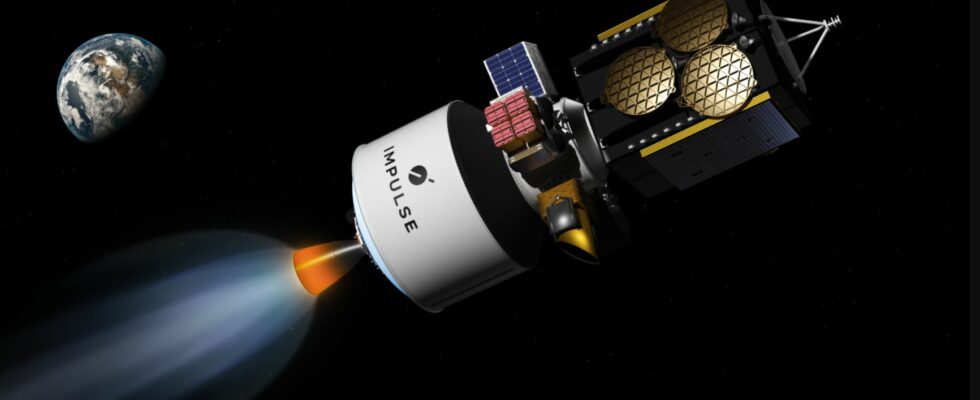At the head of Impulse Space, Tom Mueller presented a new orbital transport vehicle, a true long-life upper stage, to send satellites on precise and demanding trajectories. A service with a suite of ideas: the Helios floor fits precisely under the headdress of SpaceX rockets !
If you don’t know Tom Mueller, you may have missed one of the key figures in space of the last 20 years. Indeed, he was one of the very first employees of SpaceX from the formation of the company in 2002 and he was the engineer behind the now famous engine of Falcon 1 then Falcon 9 and Falcon Heavy, the Merlin. Since 2020, Tom Mueller has left the ogre of Los Angeles, but without animosity, in order to experience his own entrepreneurial adventure: he directs Impulse Space, which specializes in orbital transport. However, for the moment, these services are rather famous in low orbit, and constitute the core market of several companies (such as the Italians D-Orbit or the Americans Momentus).
The transport vehicles take off in launches shared with sometimes dozens of other satellites, then take their passengers into a specific orbit before ejecting them in a sequence that can extend over several weeks. Impulse Space already offers this type of contract with its first vehicle, Mira. And for a start-up that is less than four years old, having a functioning space transport satellite is rare! Tom Mueller, however, would like to scale it up with a real cargo stage: Helios.
A do-it-all Helios
Powered by a single engine running on methane and liquid oxygen called “Deneb”, Helios has the ambition of becoming an upper stage adaptable to several rockets, in particular those which are today optimized for low orbit. And in particular Falcon 9: it is no coincidence that Helios has just the dimensions to fit into his headdress! It turns out that today, Falcon 9 and Heavy have architectures which are, despite the ability to restart their engines, poorly optimized for so-called “high energy” orbits. The satellite must therefore have its own means of maneuvering, for example to reach geostationary orbit.
However, this is not trivial in terms of costs, either it needs a large central tank and thrusters which will no longer be used once in geostationary orbit, or it needs ionic electric propulsion, very efficient but costly in terms of resources (the Xenon, the majority in the sector, is expensive per kilo). Impulse Space announces that Helios could take a 4-ton satellite into direct geostationary orbit via Falcon 9. 5-ton satellite with a Terran-R rocket from Relativity Space, etc.
You have to look a little further
In itself, this proposal for an efficient and long-life maneuvering stage is not 100% original: Russia, for example, has its Fregat stage which does more or less the same thing with other propellants. But Helios is a little more promising, because there are 2 elements that are part of the background for now. The first is this engine, the Deneb. When Tom Mueller’s team builds an engine, you better pay attention. The Deneb is intended to become a rocket engine adapted to vacuum, very efficient and much less expensive than the existing one, which has existed for 40 years, but still dominates this sector on the American side, the RL-10 from Aerojet Rocketdyne which powers the Centaur stages or the SLS (count a 7-figure check per unit, without the stage that goes with it).
Second element is that Helios is planned as an evolving platform, with in particular in the future, the capacity to fill its two tanks with oxygen and methane. Now you know of a vehicle which goes into orbit and which has the capacity to transfer these two propellants, it is of course the Starship. Where SpaceX is going, Tom Mueller is not far away… And he is in wait to offer optimized services.
Source : Ars Technica

0